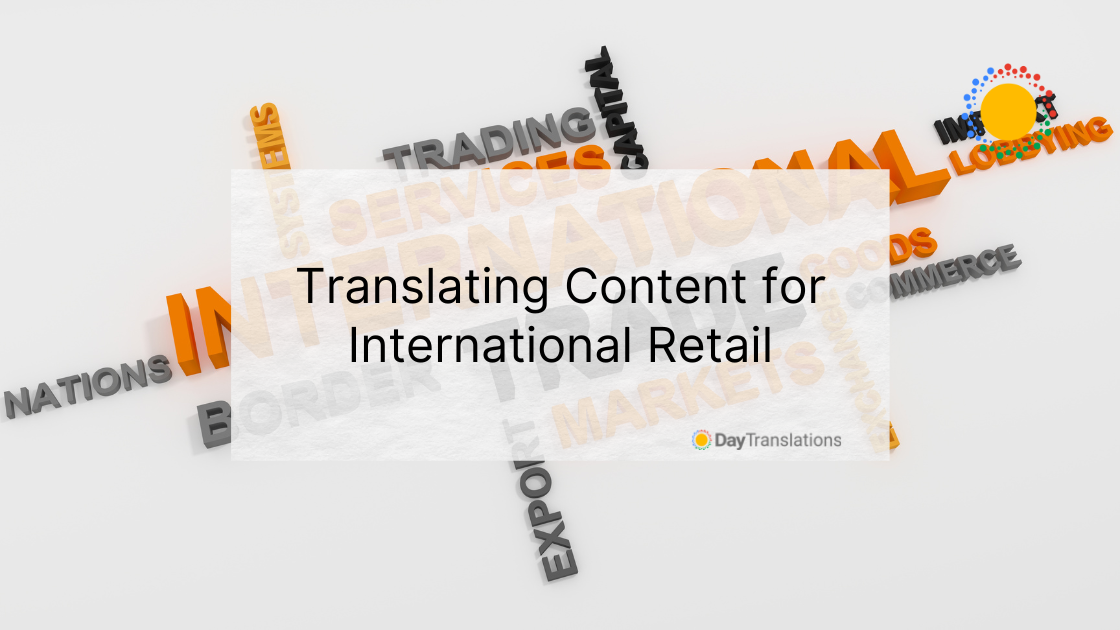Consumers today buy products from all over the world, making it necessary for companies to prepare their websites for international retail. It’s good for business since there is an increase in online shoppers, but international retail service also warrants that the brand provides them with enhanced user experience – from finding products that suit their taste and budget and getting information in their preferred language.
It was not too long ago when companies conducted transactions face-to-face. Business owners scheduled meetings with potential partners, clients and suppliers, and salespeople worked hard to reach potential local buyers around town. Big businesses spent a considerable amount on advertising and promotions, attempting to be seen on high-rating TV shows, in popular magazines and newspapers and heard over radio stations with higher listenership. Yet, most businesses were after local consumers, which was one of the reasons why competition was fierce in the local market. If brands wanted to be known in other countries, they often relied on placing ads in foreign newspapers and magazines.
Today the situation is vastly different. With the advancement of information and communication technologies, it is easier and faster to be seen around the world – through the digital environment. Foreign consumers, especially from countries whose economies are rapidly growing, such as the Middle East, India, China and other parts of Asia. Various opportunities are available for entrepreneurs and a wide variety of businesses to venture into the global market and provide more products and services through international retail where they can find more customers and form partnerships quickly through online engagement.
The growth of international retailers
While competition grows wider among businesses in the local market, international retail also experiences positive growth. The widening penetration of Internet service, the affordability of communication devices and the availability of communication tools, from desktops and laptops to smartphones and tablets made business and product websites accessible to consumers worldwide.
Suddenly e-commerce became popular, helping international retailers to serve consumers from different parts of the world. Their success relied on consistent customer service and consumer communication. Catering to their various needs led international retailers to build their own niches.
Translation for international retail
It became apparent that the international retail market needed to adapt to the needs of their foreign consumers. It has become necessary for e-commerce and language translation to form a partnership as online shopping becomes increasingly popular.
As businesses grow their brands globally, they should satisfy the digital and physical experiences of international consumers. Communication is one of the primary keys to attracting foreign consumers and keeping them. This means that brands have to speak to their possible consumers in their own language, creating more opportunities for the translation industry to flourish as well as translation companies helping businesses improve their bottom lines.
International retail is a dynamic market where changes continue to evolve. The customers demand more from global brands and they have to respond. Thus, language translation was more focused, leading to localization to adapt global brands to local cultures. Reaching more customers in new markets means removing the language barriers, which is achievable by using better global content management systems.
Translating written content
The world speaks more than a thousand languages. It is not practical to translate your e-commerce site into all of those languages because not all cultures will be your potential market. What you need to do is to identify your brand’s specific customers clearly. You need to have a thorough understanding of your brand and target audiences.
You have to carefully study and analyze your customers’ demographic data, including their preferences, educational attainment, purchasing power, age, occupation and times when they make a purchase. Aside from demographic data, it is critical for an international retailer to look and feel local, meaning it should assimilate the target culture through translation and localization of its written content.
So, into what languages should you translate your website? The most obvious answer is that it depends on your target markets. It could be Spanish, Chinese, Indian or Arabic. The English language is still the most popular when it comes to published content for the web. But you should not forget the other languages and cultures that are also dominant, such as Russian, Japanese, German, Portuguese, French, Polish, Korean and Italian.
The Internet allows people to be connected to one another, which effectively made the world smaller. With translation and localization, it is easier for people to hurdle the language barrier. They are able to navigate the international retail environment quicker.
Online shopping started in 1995 and since then it gained more extensive attention and widespread use. The growth increases each year and it is expected to grow more as the Internet gains more global subscribers.
As more people from almost every corner of the globe discover online shopping, that more it vital it becomes for businesses to personalize the information they provide to their customers. Consumer metrics show that global customers are more inclined to look for and buy products from international retail sites that speak their mother tongues.
The extent of the translation and localization project depends on the level of impact and complexity the language service has on the operations of the company. There are companies that only need language services when dealing with occasional foreign customers.
On the other hand, some companies want to translate all materials that are seen by customers as well as the companies their local partner companies.
The world is now smaller
When you consider the growth of information technology and communication, you can say that the world has indeed grown smaller as the retail market is now interconnected.
Products made in China were considered inferior a few decades back. But look at China today. After it opened its doors to the West, it is now one of the world’s strongest economies. The Chinese middle class continues to grow and they are one of the biggest purchasers of various products and services, including luxury goods, life insurance and healthcare.
Retailers along with big foreign companies are very aware that businesses from the West also want to join the retail trade to capture new consumers. They understand that not all of the competitors in the global stage have the linguistic capability to communicate effectively with foreign consumers.
Translation is a real priority with real benefits
The retail industry serves the community and its faithful consumers. Due to competition, international retailers cannot afford to remain silent and complacent. They need to have more clients so that their business could expand.
Whatever people say about faster and better communication, cultural and language barriers remain a big issue. Since it has been proven that most web visitors spend more time on sites that speak their own language. Many companies are looking at translation as a big help in allowing them to serve international consumers.
Translation is now a priority among many global businesses. They realize that employing a translator helps them communicate with foreign-language speaking clients in real-time. They can seal deals with the help of translators and they can give better service to clients who speak other languages.
English remains the language of business. However, when it comes to websites, it is vital to provide potential customers with product information, prices and procedures in their language. It helps them understand customer-facing information. Localization gives a new persona to an international retail website. When accurately and comprehensively done by a professional translation company, a localized website stands out yet becomes one that is made just for the target market, injecting local color, cultural practices and customs and local standards.
How to adapt to international retail customers
If you want to be a multilingual retailer, you have to understand a few rules.
- You need to look and sound like your local counterparts. One thing that many international retailers forget is changing their domain location, which is what search engines are looking for right now. So instead of the usual .com or .co, you should have new domain extensions for your target locations, such as .de, .br or .nl. It is also a good idea to have local IP addresses.
- Provide a manual language selector instead of an automatic selector that reacts to the IP addresses. When the consumer can control the language, the site works better mainly in areas where multiple languages are spoken. It also contributes to a user’s experience, allowing them to browse and shop with ease.
- Give careful consideration to your search engine marketing (SEM) and search engine optimization (SEO) strategy since keywords for global search are unique to each target market.
- In-country customer support is essential. You should hire someone local to handle customer service. See to it that automatic emails are translated, such as feedback and order confirmation, updates on the status of a customer’s order and notice of shipping.
Translate your website for international retail
You will find more tips on translation and localization for the global market here and here.
If you want expert help in translating your website for international retail, get in touch with Day Translations, Inc. immediately. We have native-speaking translators and subject matter experts to help you fully adapt your e-commerce site to your target locales. We work with more than 100 language pairs, ensuring that we can translate and localize your website into the languages spoken by your intended audiences. Localization is a significant investment and you want to get it right the first time you do it. We work with businesses from the time they think of going global. This helps in ensuring that your strategies are on course and applied to the development of the localization project. Work with our translation and localization experts. Give us a call at 1-800-969-6853 or send us an email at Contact us anytime. We are open 24/7, 365 days of the year.












freehappyhalloweenimages2018.com
Posted at 05:30h, 11 SeptemberThanks for your marvelous posting! I really enjoyed
reading it, you’re a great author. I will ensure that I bookmark your
blog and will eventually come back in the future. I want to
encourage continue your great writing, have a nice weekend!